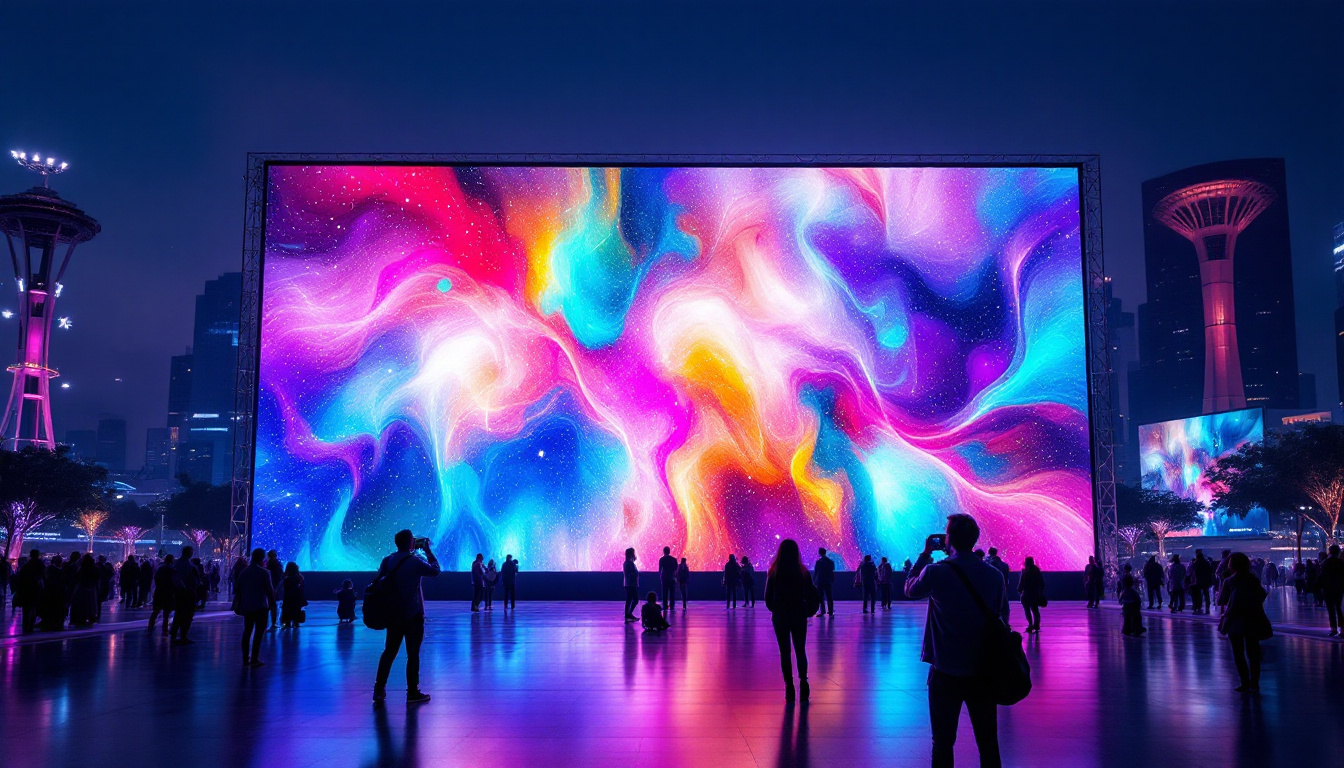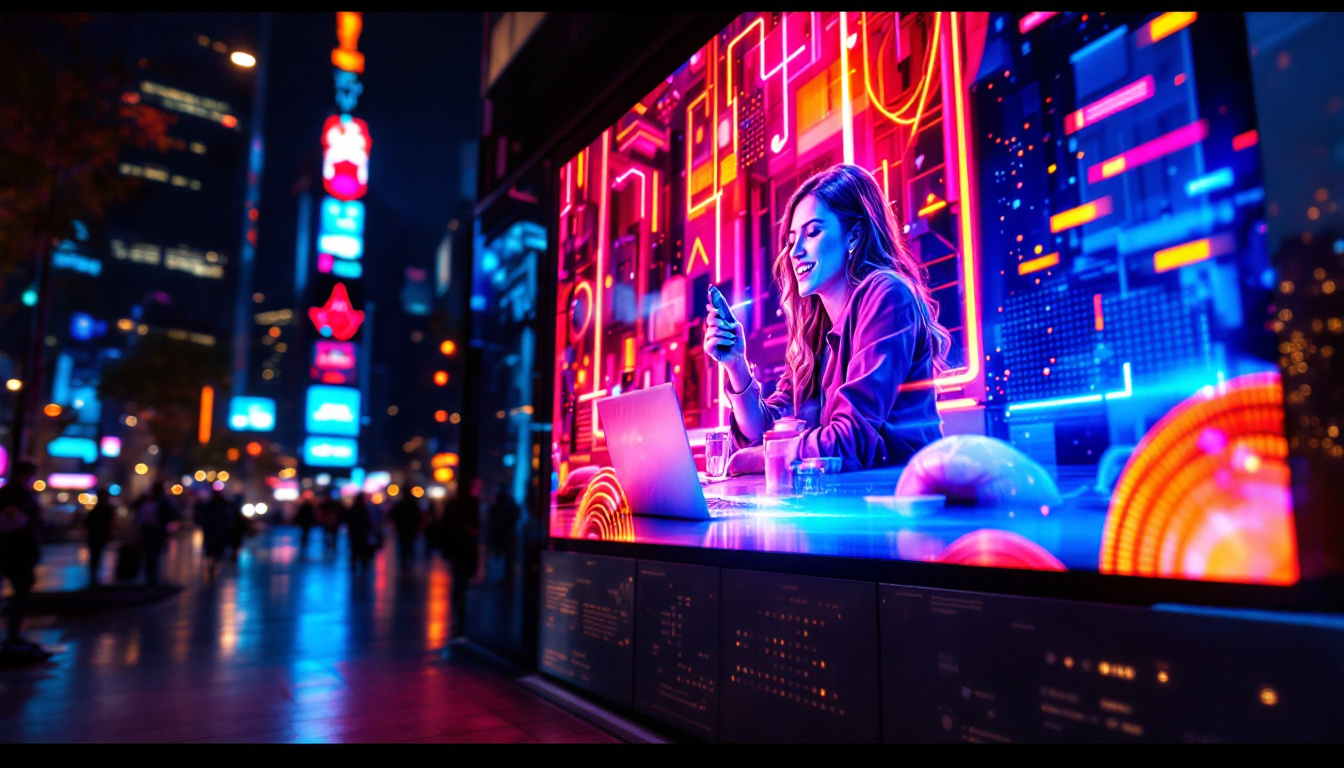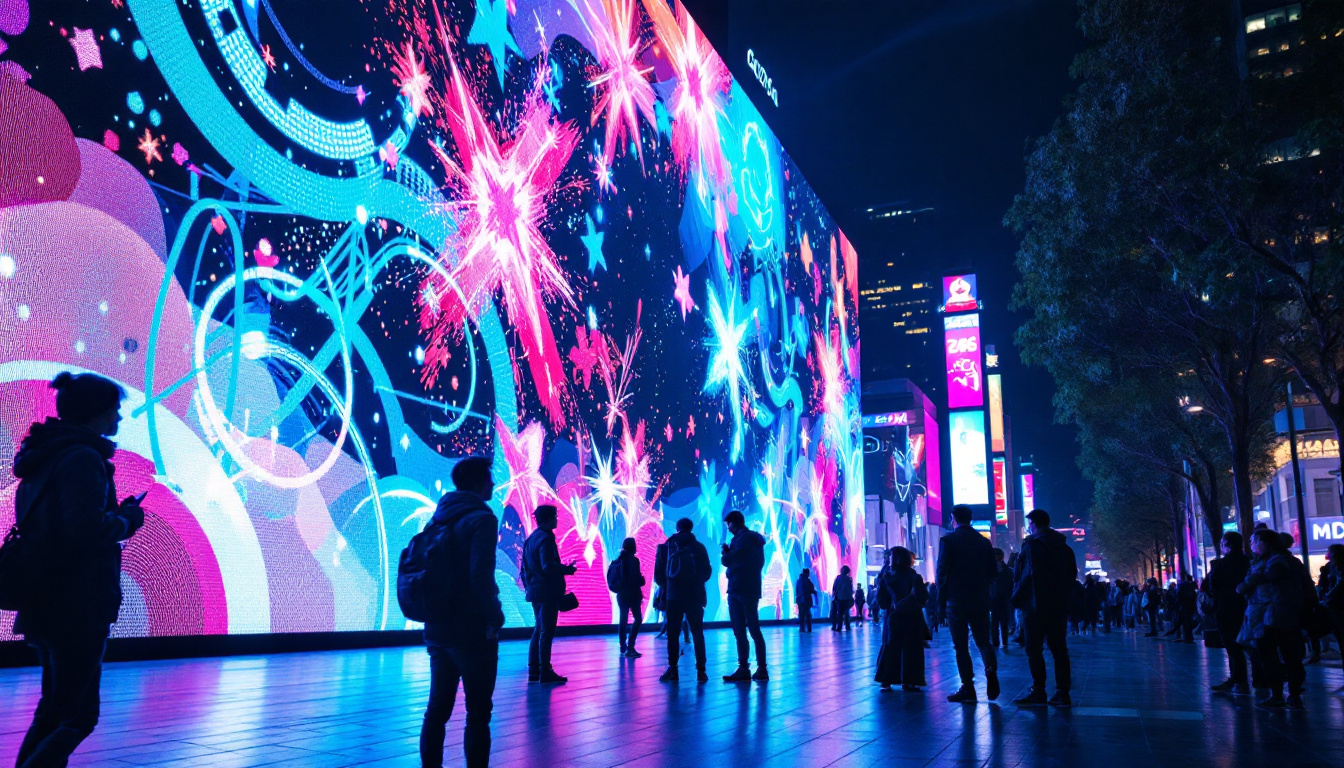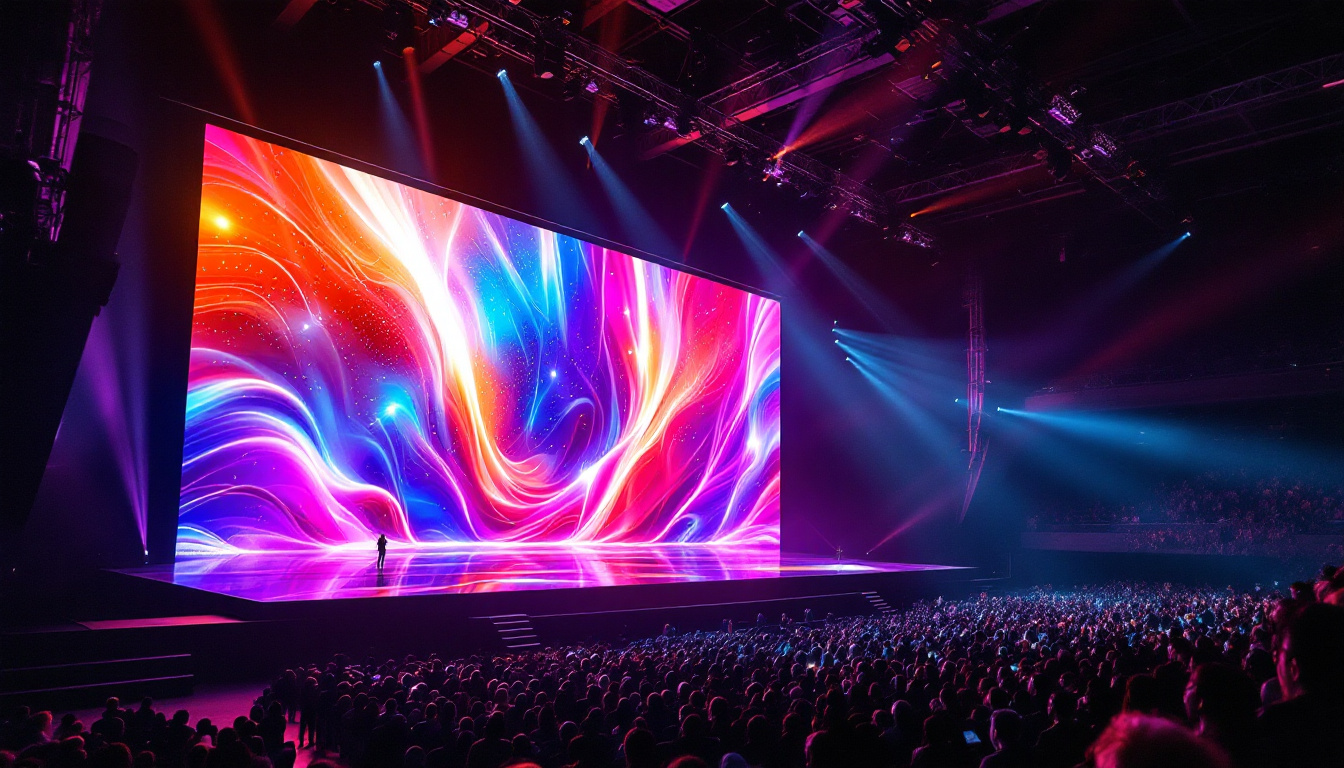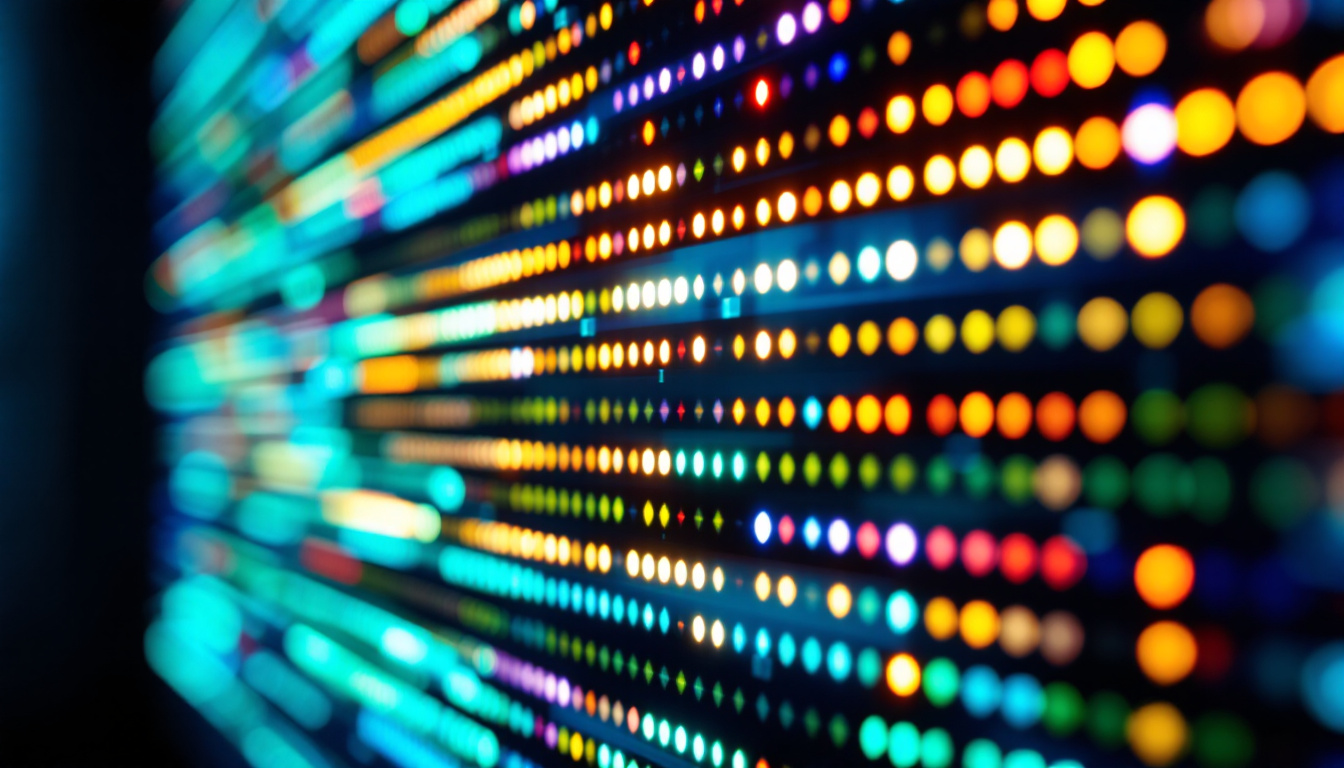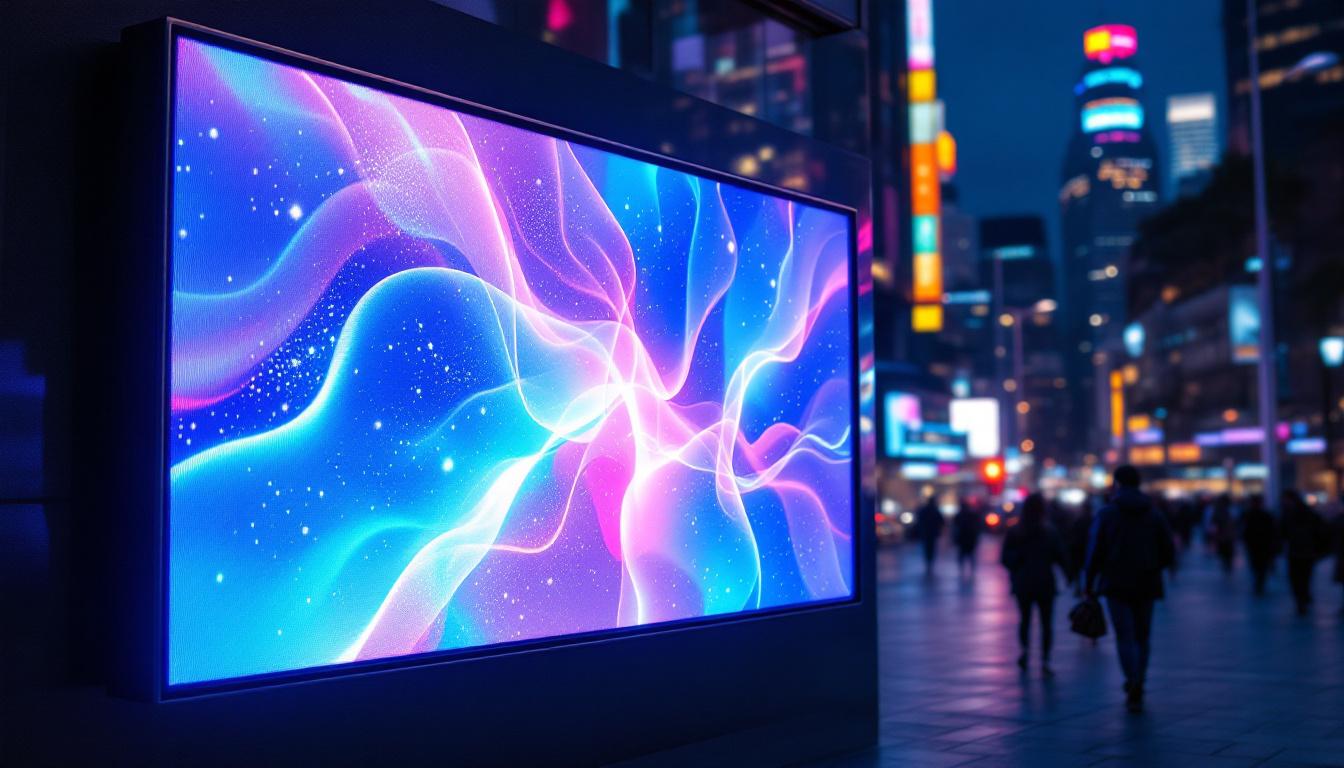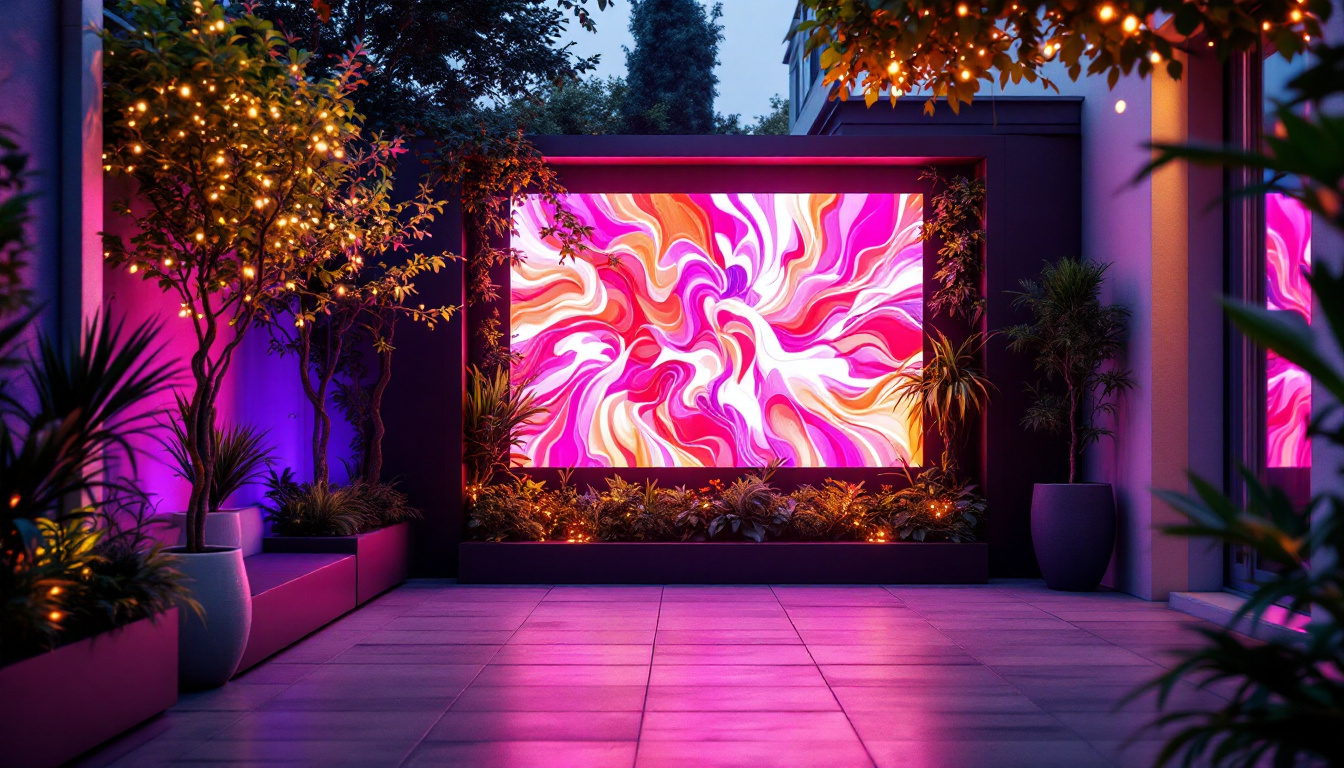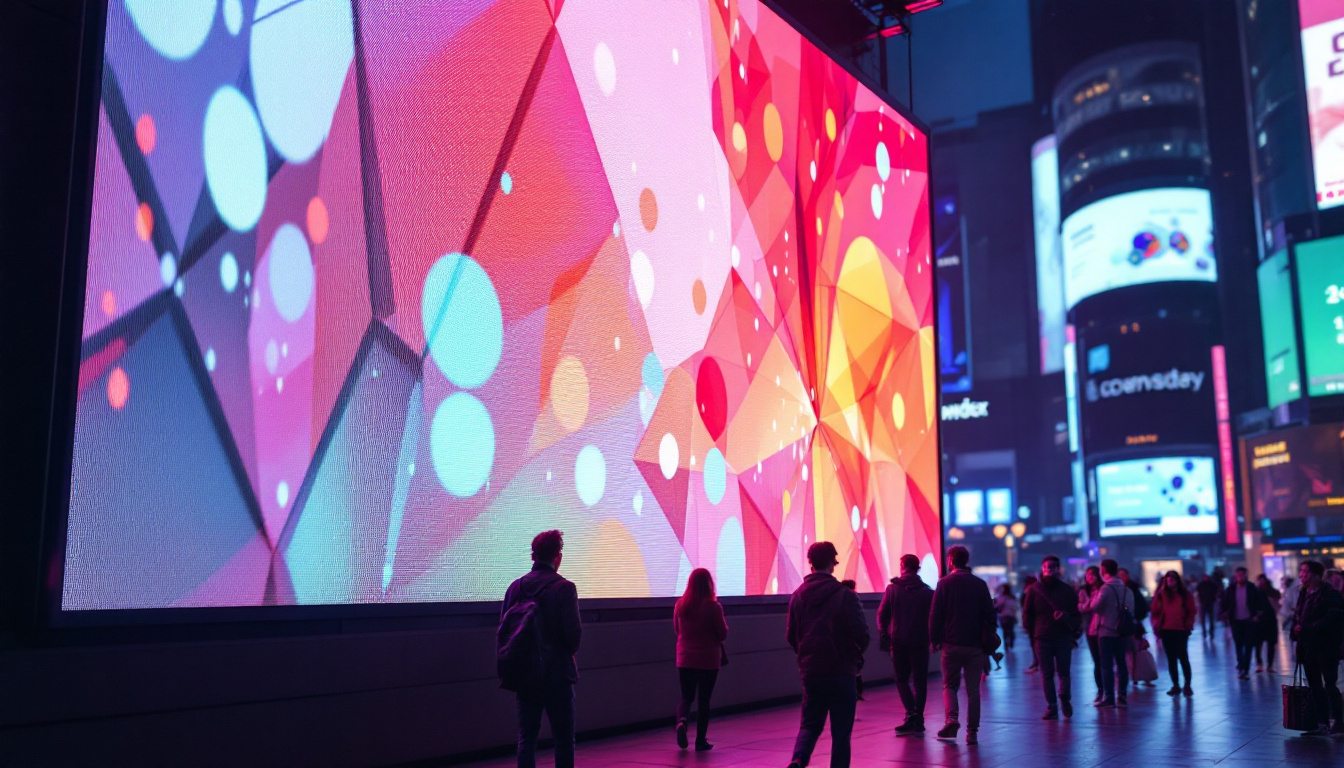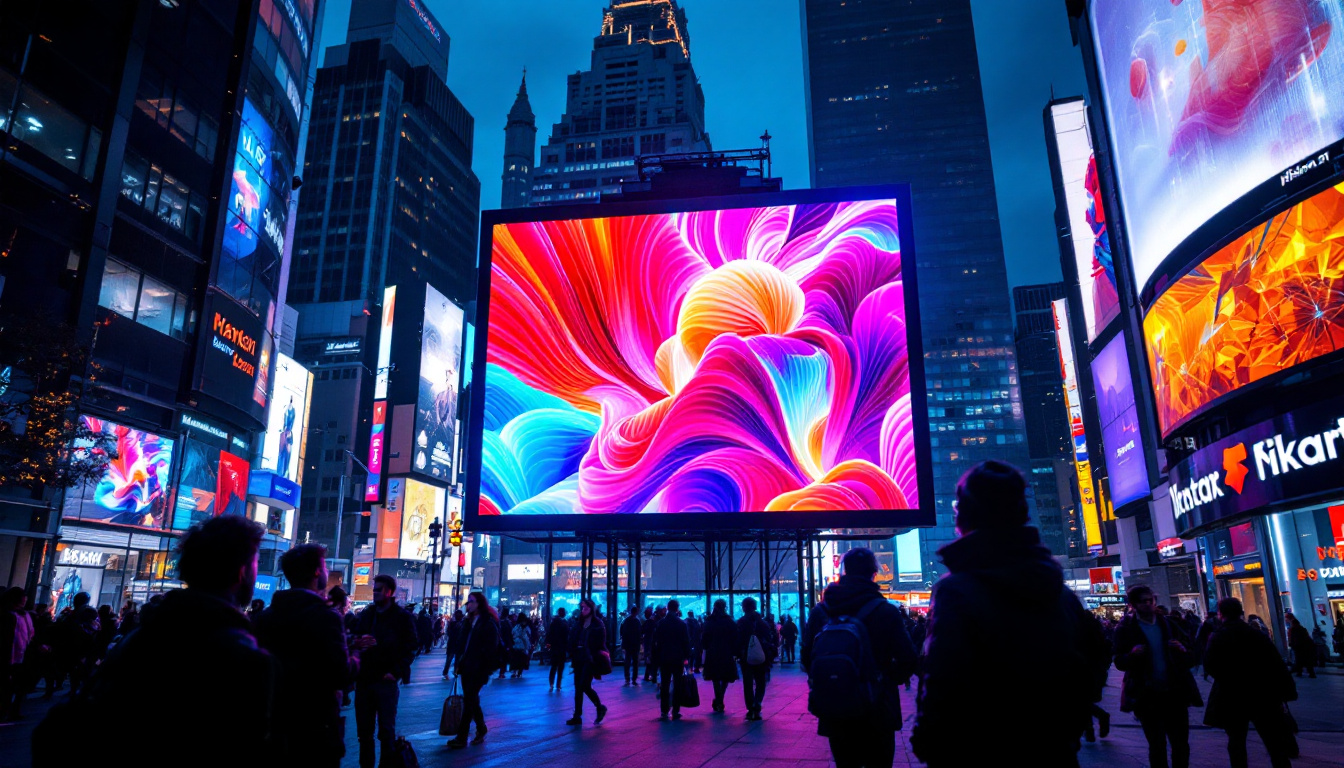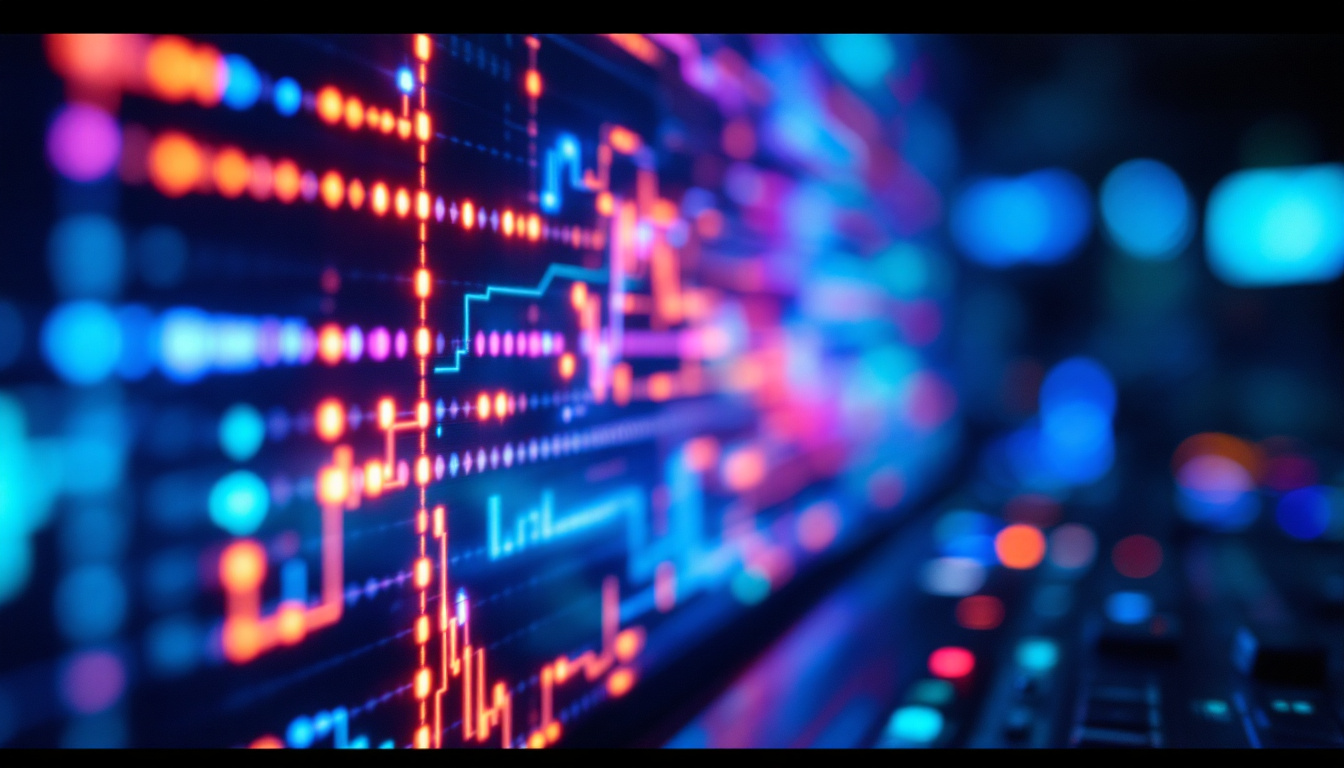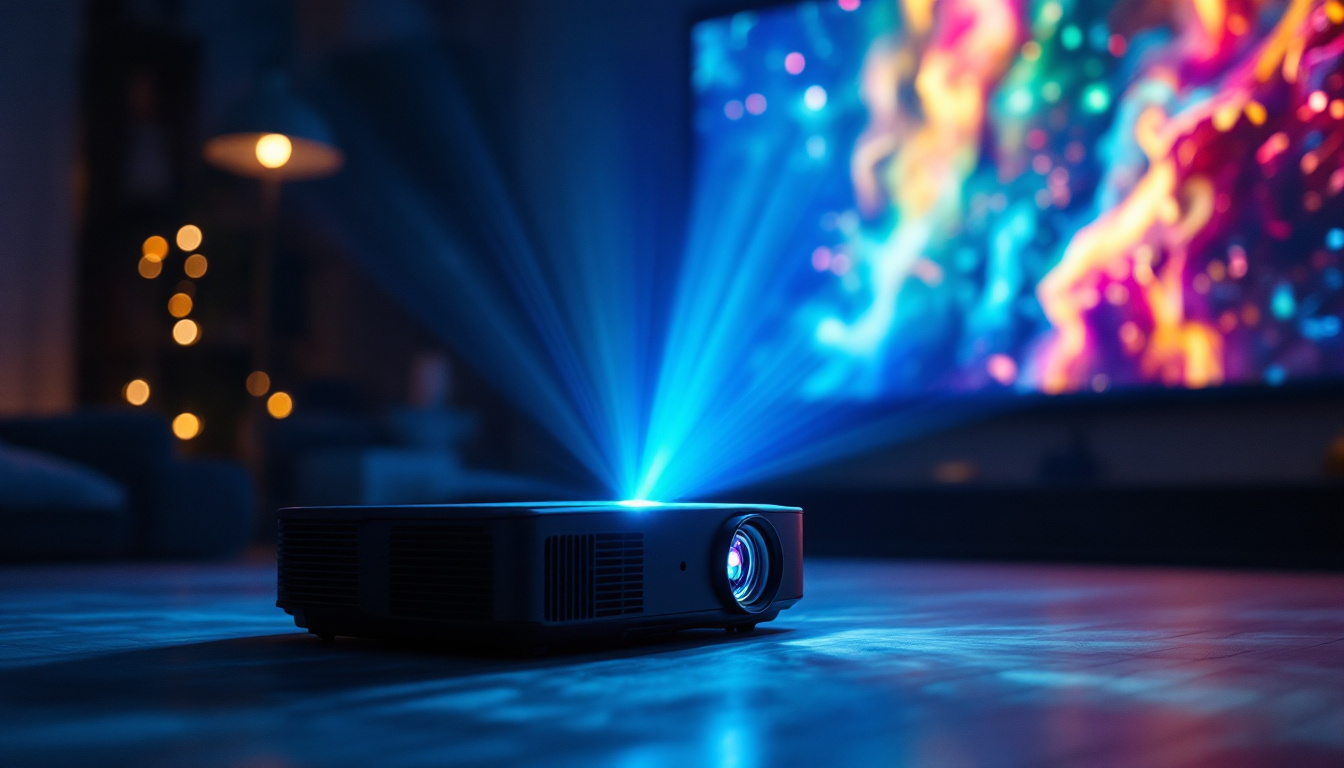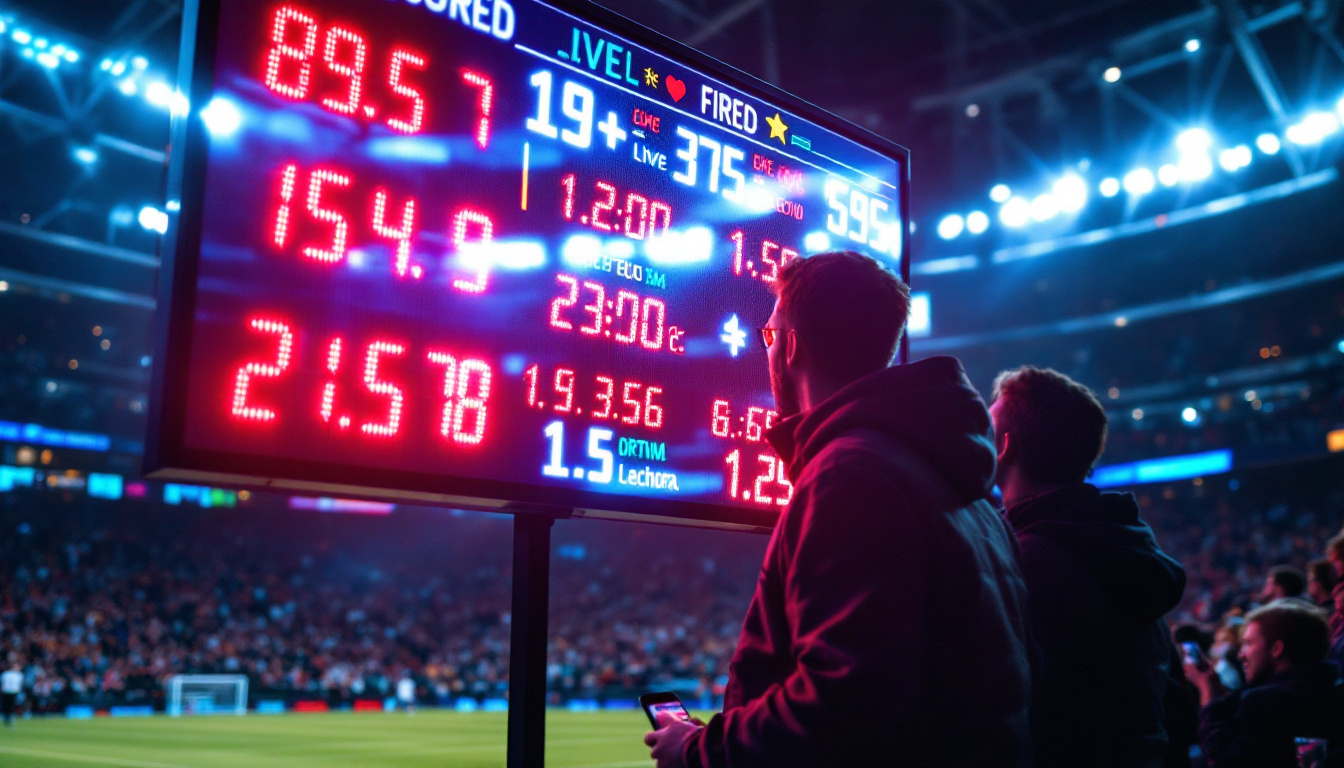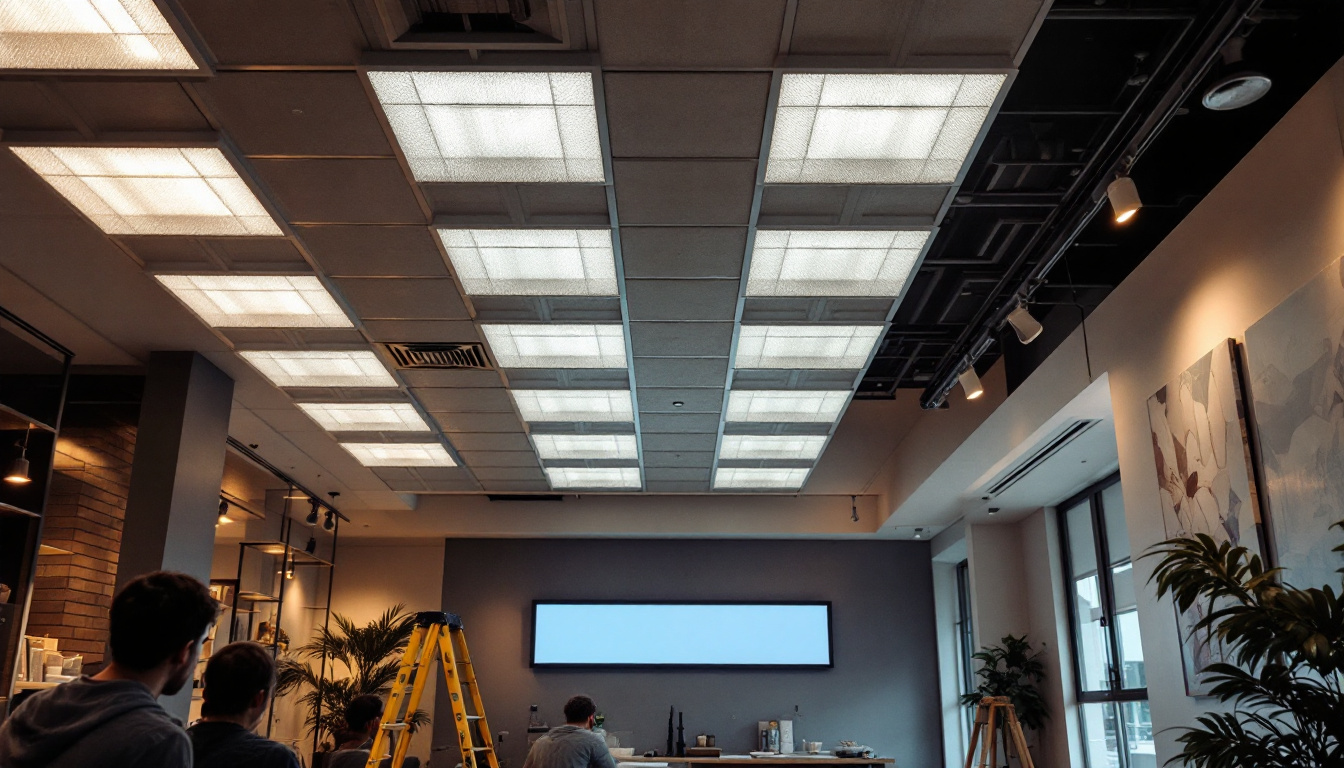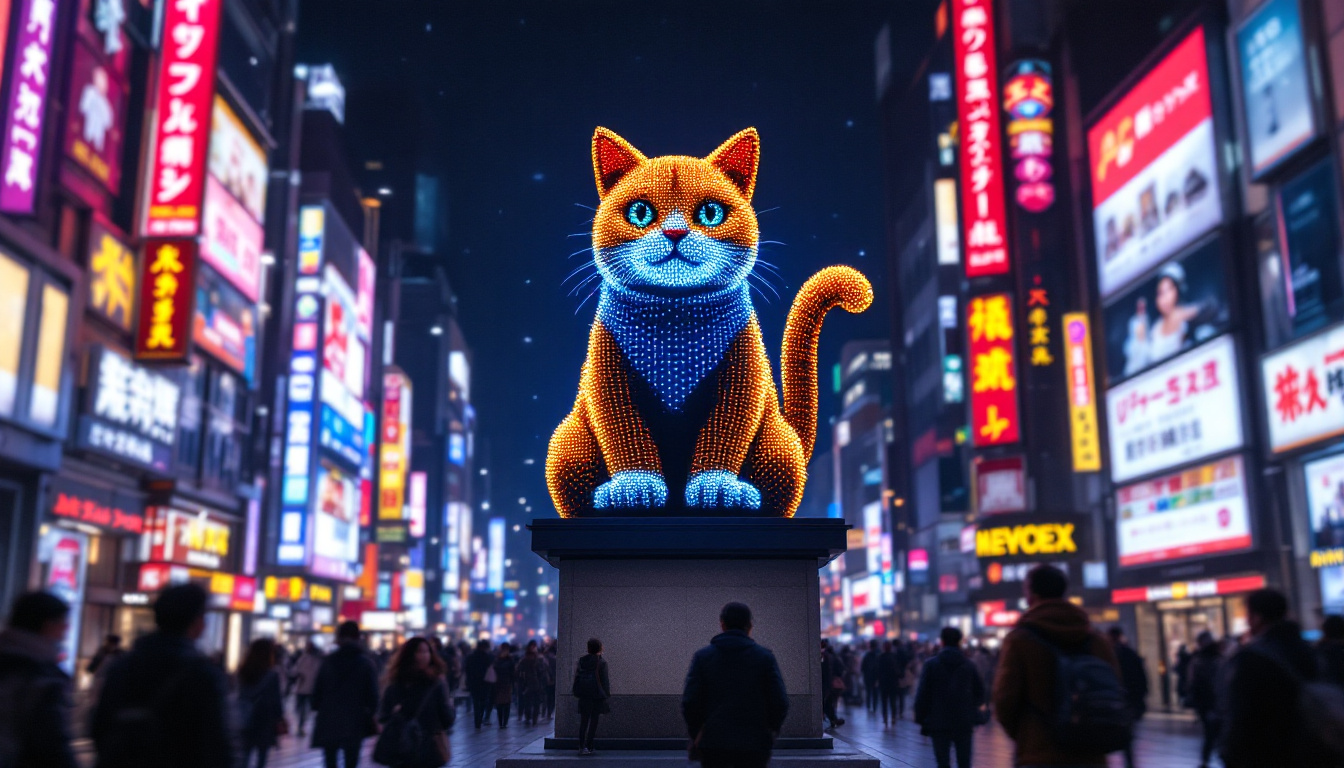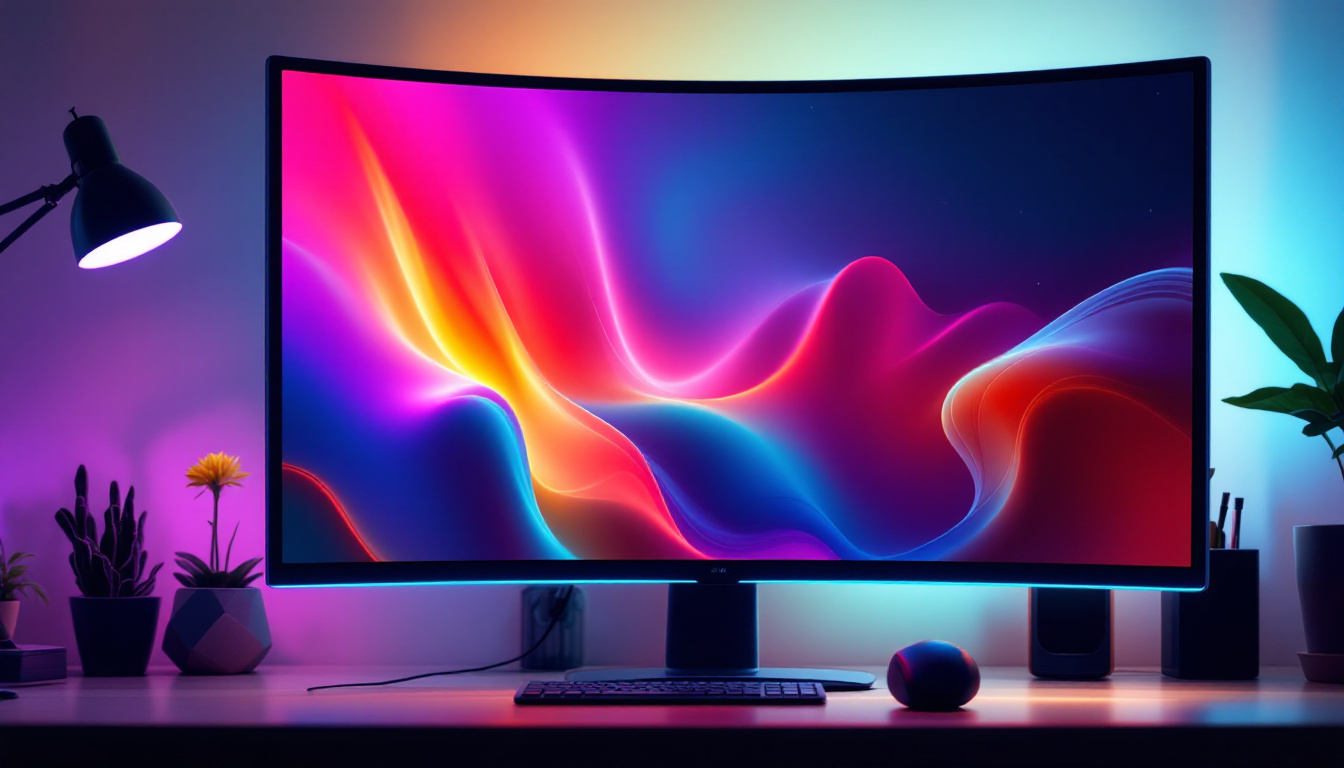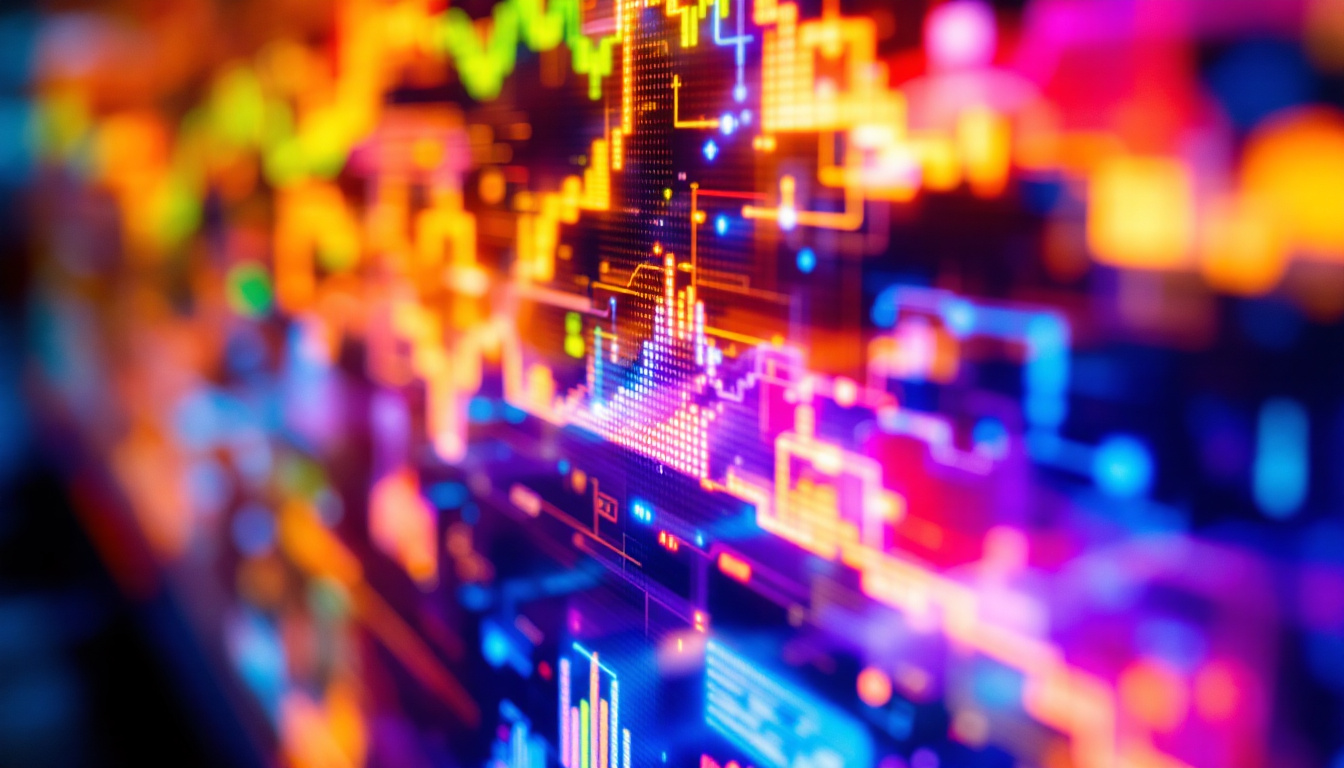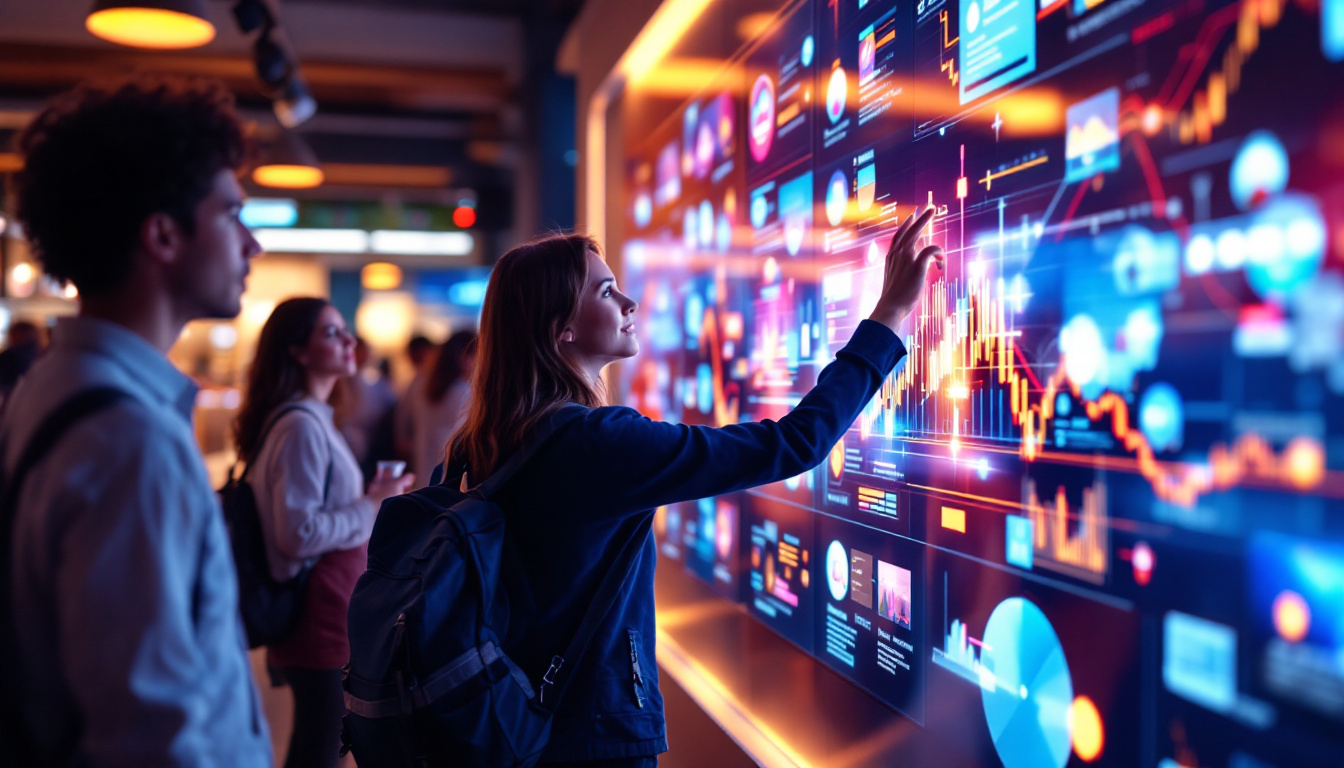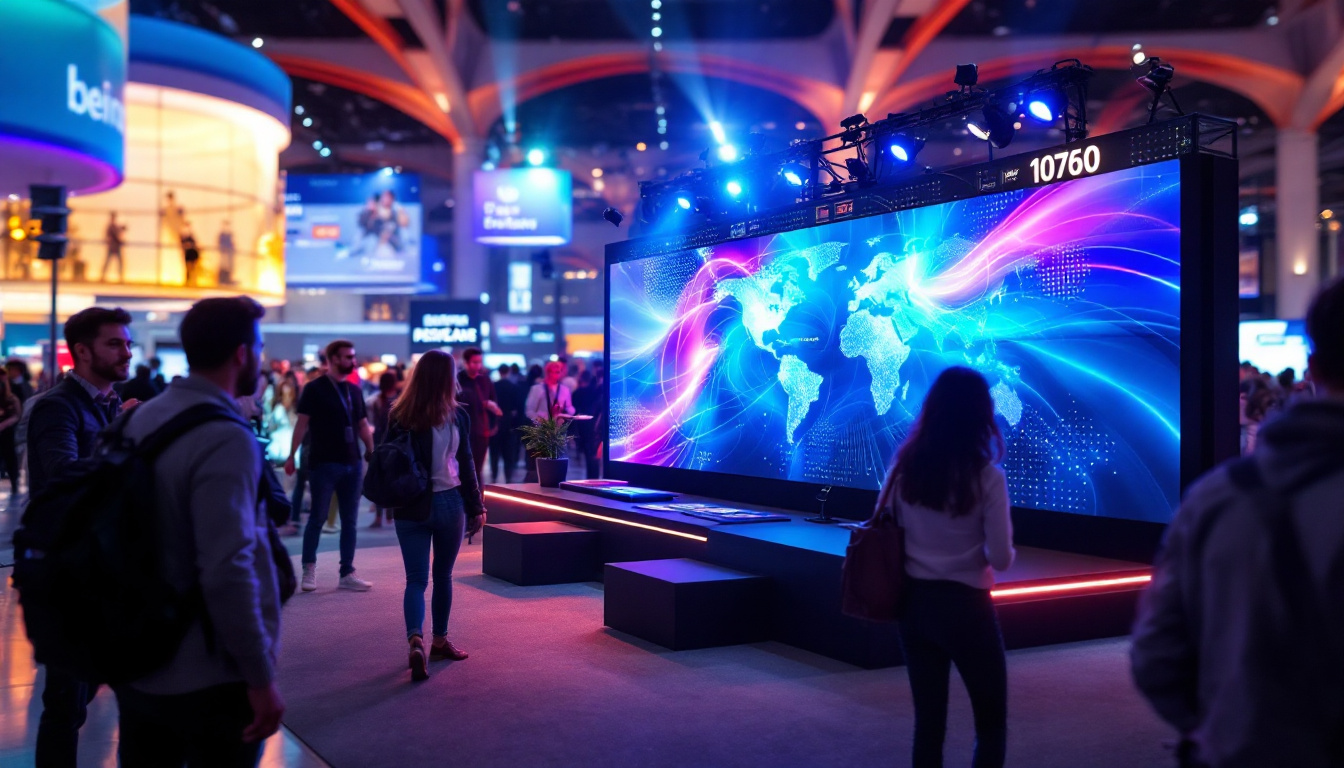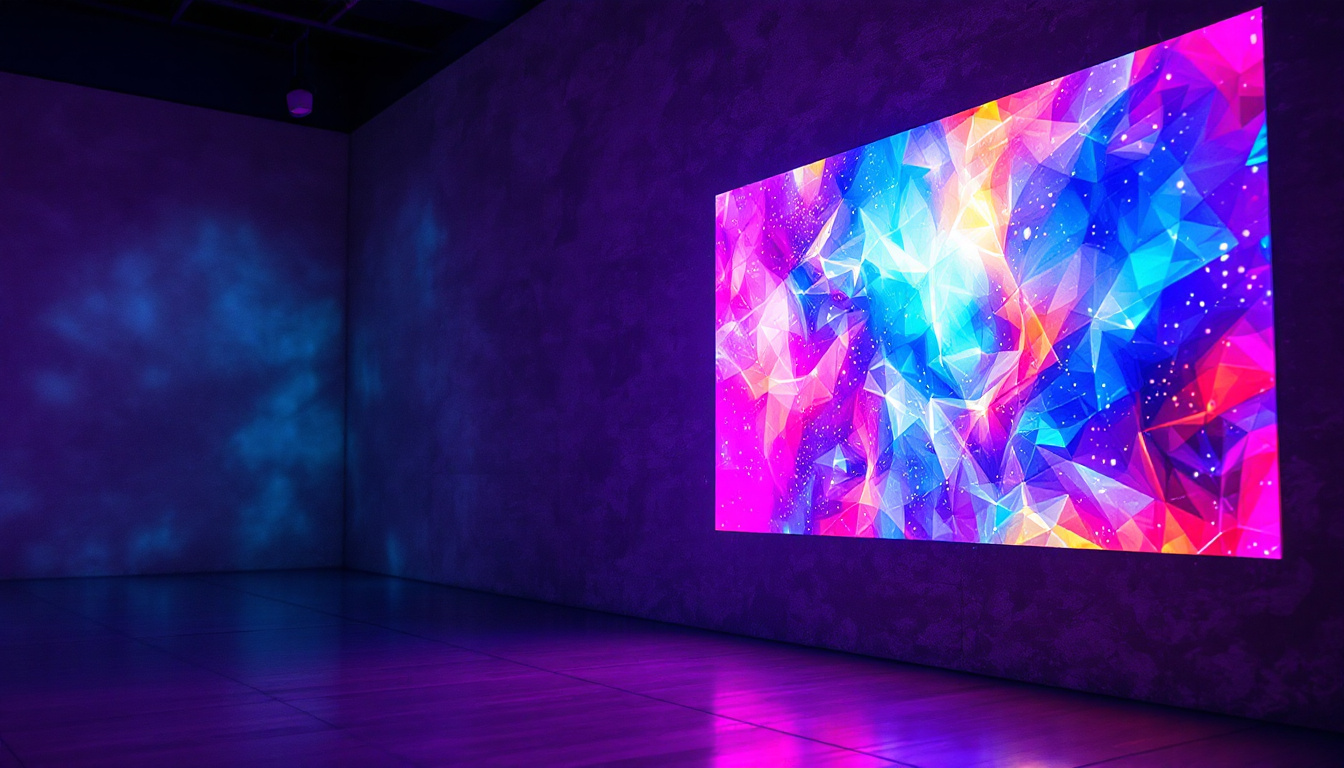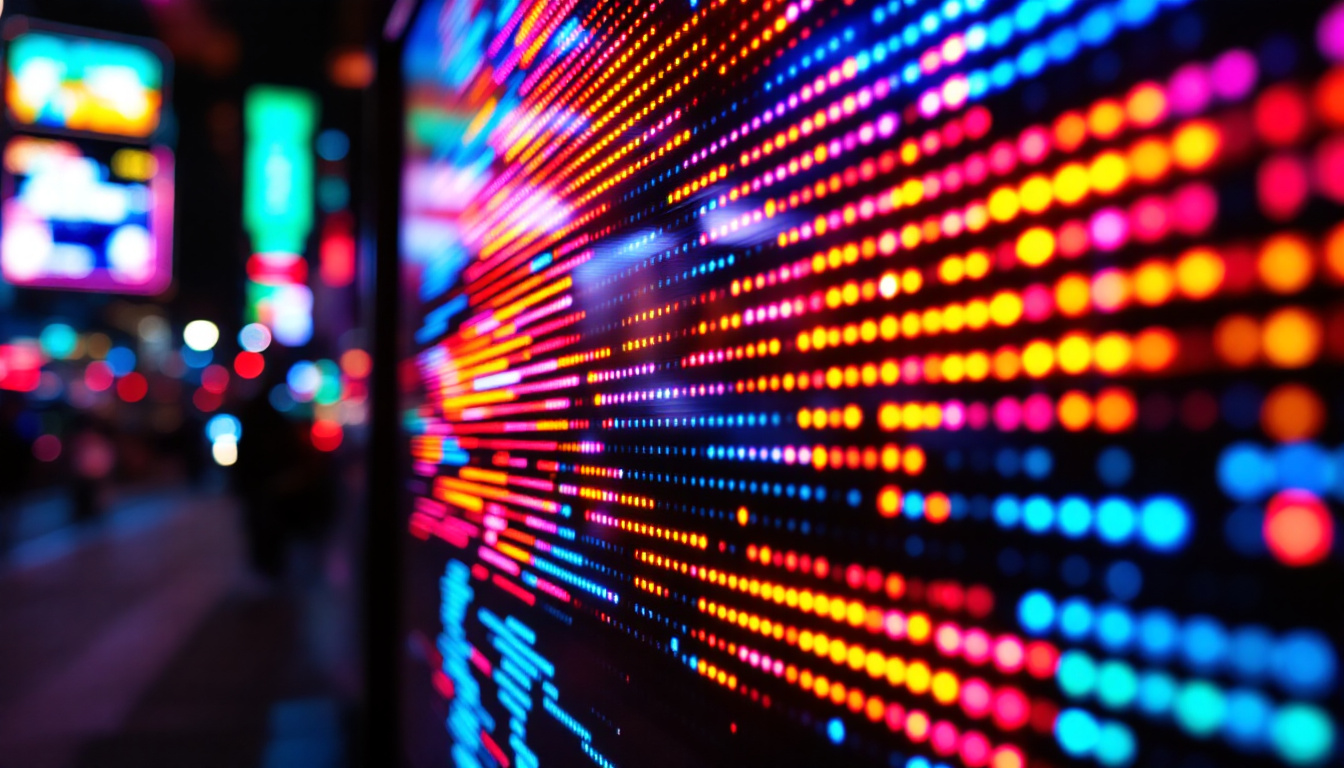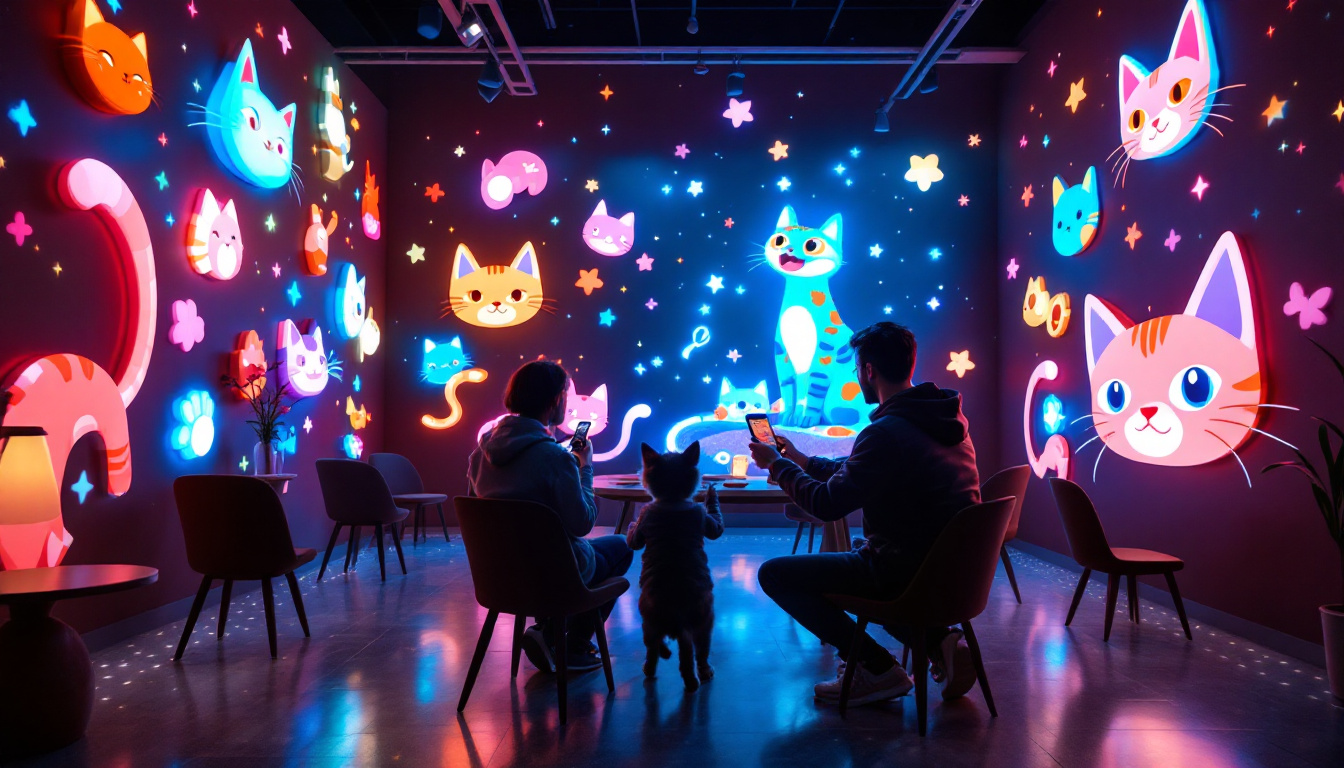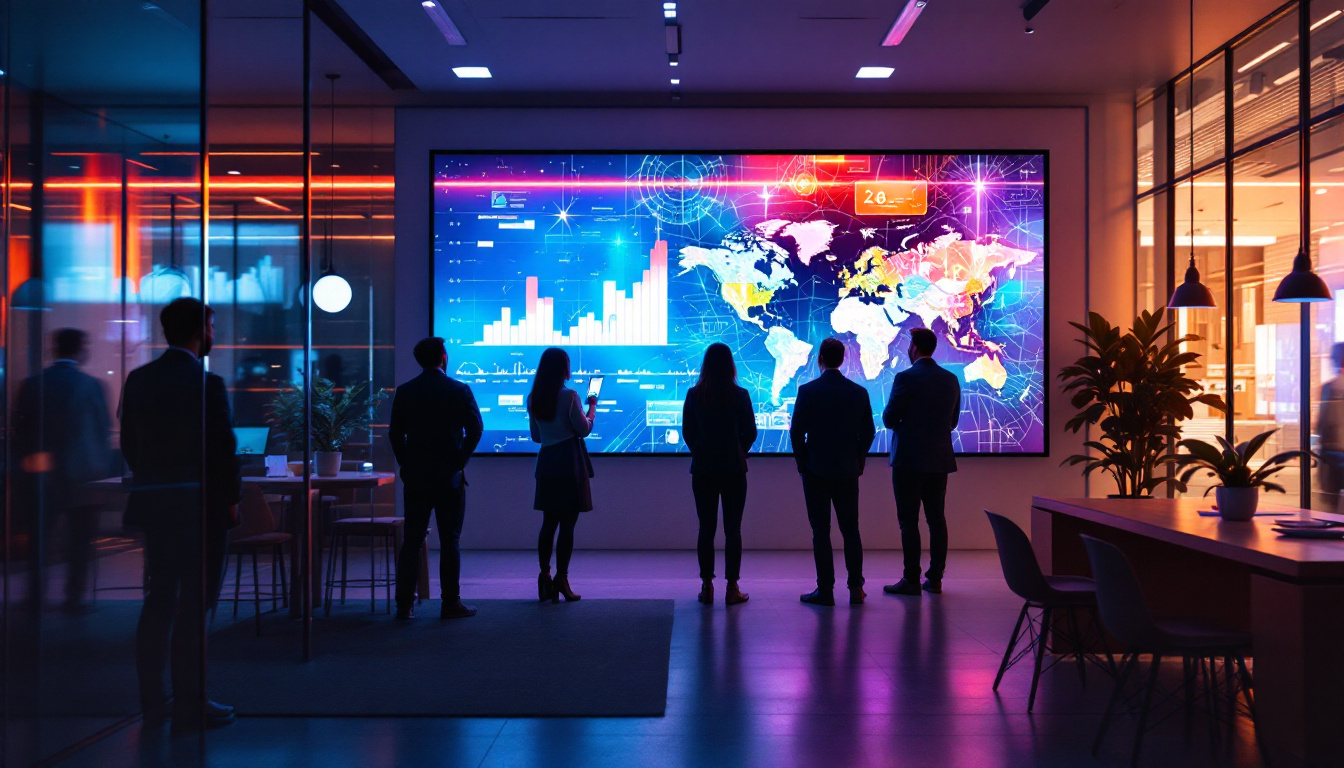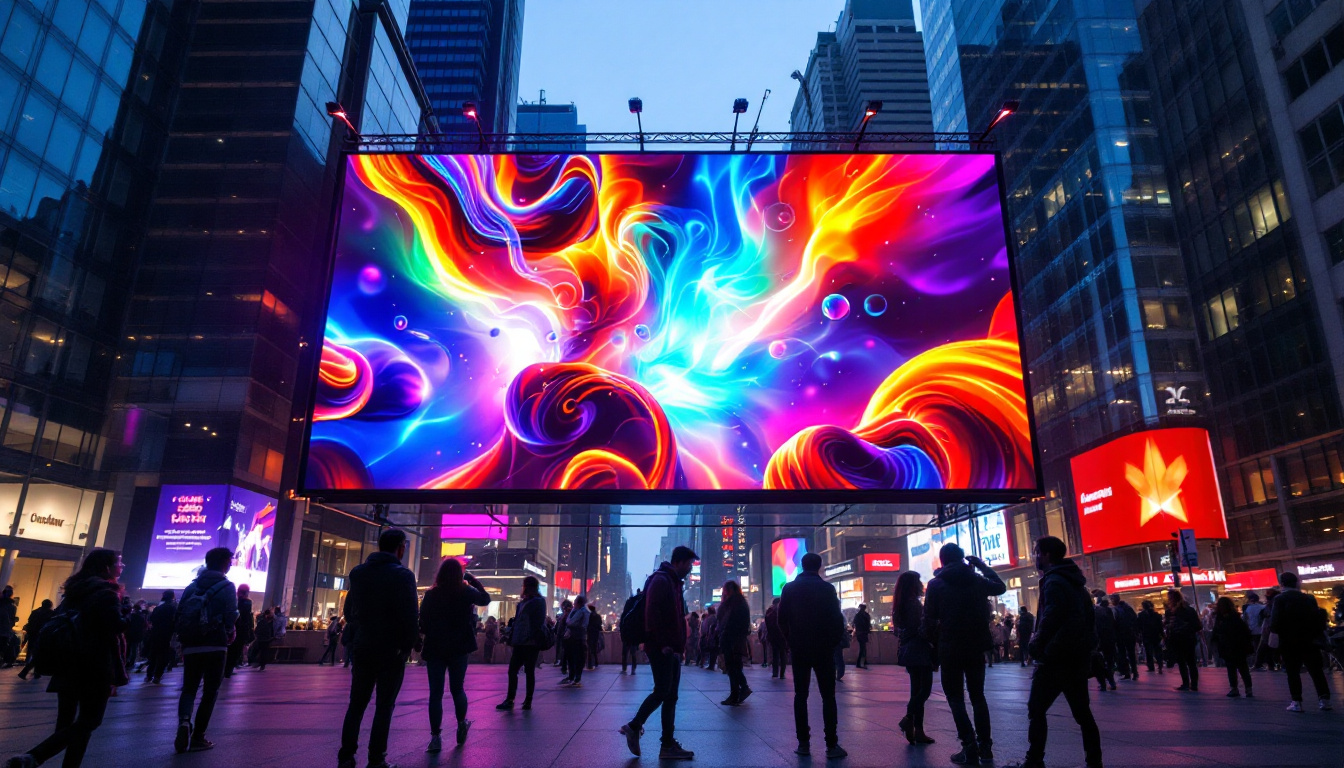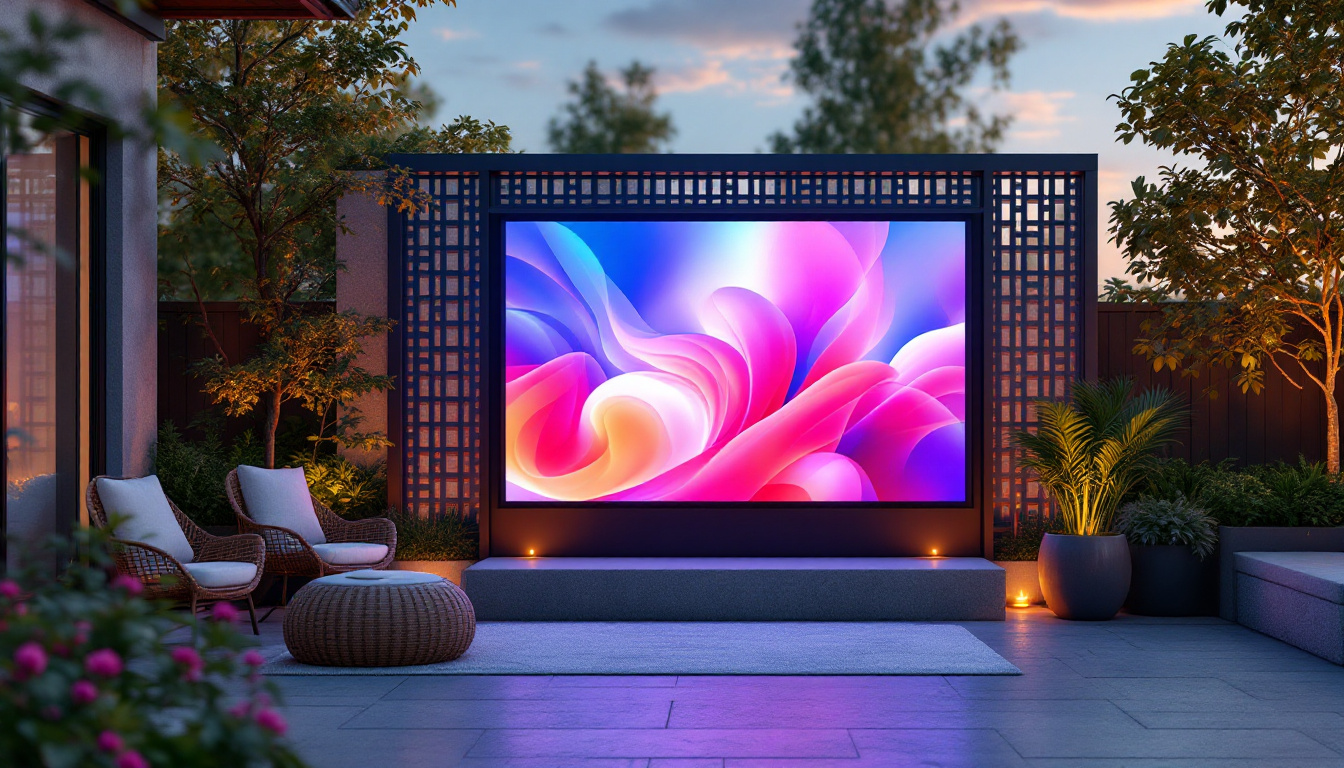World’s Largest Television Screen: LED Display Explained
The world of television has witnessed remarkable advancements over the years, culminating in the creation of the largest television screen ever made. This monumental achievement is not just about size; it encompasses cutting-edge technology, innovative design, and a captivating viewing experience. In this article, we will delve into the specifics of the world’s largest LED display, exploring its features, the technology behind it, and its impact on entertainment and advertising.
The Evolution of Television Screens
Television screens have come a long way since their inception. From bulky cathode ray tubes (CRTs) to sleek flat panels, the journey has been marked by continuous innovation. The introduction of LED (Light Emitting Diode) technology has revolutionized the way we perceive images on screens, offering brighter displays, better energy efficiency, and thinner profiles.
Initially, LED technology was primarily used for backlighting LCD screens. However, advancements led to the development of full LED displays, which provide enhanced color accuracy and contrast. This evolution paved the way for larger screens, culminating in the creation of massive LED displays that can now be found in public spaces around the globe.
The Rise of Large-Scale Displays
As technology advanced, the demand for larger displays grew, especially in commercial settings. Sports arenas, concert venues, and public squares began to adopt large-scale LED screens to enhance the viewer experience. These displays not only serve as a medium for entertainment but also as powerful advertising platforms that can reach thousands of people simultaneously.
The transition to larger screens has been driven by the desire for immersive experiences. Whether it’s a live sports event or a concert, a gigantic screen can create a sense of presence that smaller screens simply cannot match. This has led to the design and installation of some of the largest LED displays in the world. For instance, the famous Times Square in New York City features an array of colossal screens that not only display advertisements but also broadcast live events, making it a vibrant hub of activity and engagement.
Moreover, the technology behind these large displays continues to evolve. Innovations such as 8K resolution and high dynamic range (HDR) are pushing the boundaries of image quality, allowing for stunning visuals that captivate audiences. The integration of smart technology has also transformed how these displays are used, enabling real-time updates and interactive content that can enhance viewer engagement. As a result, we are witnessing a shift towards more dynamic and responsive displays that cater to the ever-changing demands of modern audiences.
The World’s Largest LED Screen
Currently, the title of the world’s largest television screen belongs to the LED display at the AT&T Stadium in Arlington, Texas. This colossal screen measures an astonishing 160 feet wide and 72 feet tall, making it a true marvel of modern engineering. The display is not only massive but also boasts a resolution that ensures clarity and vibrancy, making it ideal for showcasing high-definition content.
The screen is suspended from the stadium’s roof, providing a 360-degree viewing experience for fans. This innovative design allows spectators in every corner of the stadium to enjoy the action without straining their necks. The integration of this LED display has transformed the way fans experience live events, providing instant replays, player stats, and immersive graphics that enhance the overall atmosphere. The stadium itself, which can hold over 80,000 spectators, has become a focal point for major sporting events, concerts, and entertainment shows, with the LED screen serving as a central feature that draws attention and excitement.
Technical Specifications
The technical specifications of the world’s largest LED screen are as impressive as its size. The display utilizes millions of individual LEDs to create bright, vivid images that can be seen even in direct sunlight. With a pixel pitch of just 10 millimeters, the screen delivers stunning detail, ensuring that every seat in the stadium has a clear view of the action. This pixel density allows for seamless visuals, making it difficult for viewers to discern individual pixels, thus enhancing the immersive experience.
Additionally, the screen is equipped with advanced technology that allows for real-time content updates. This means that during events, the display can showcase live feeds, advertisements, and other dynamic content, keeping fans engaged throughout the game or concert. The integration of such technology not only enhances the viewer experience but also provides sponsors and advertisers with valuable exposure. Moreover, the LED screen is designed to be energy-efficient, utilizing cutting-edge technology that minimizes power consumption while maximizing brightness and color accuracy. This commitment to sustainability aligns with the growing trend of eco-conscious design in modern sports venues, ensuring that the AT&T Stadium remains at the forefront of innovation while also being mindful of its environmental impact.
The Technology Behind LED Displays
Understanding the technology behind LED displays is essential to appreciate their impact fully. LED technology operates on the principle of electroluminescence, where light is emitted from a semiconductor material when an electric current passes through it. This process allows for the creation of bright and energy-efficient displays. The innovation in LED technology has transformed not just consumer electronics but also advertising, entertainment, and information dissemination, making it a cornerstone of modern visual communication.
LED screens are composed of numerous tiny pixels, each made up of red, green, and blue (RGB) sub-pixels. By adjusting the intensity of each sub-pixel, a wide range of colors can be produced, resulting in vibrant and lifelike images. This color accuracy is crucial, especially for large displays, where any inconsistencies can be magnified and become noticeable to viewers. Furthermore, advancements in LED technology have led to the development of high dynamic range (HDR) displays, which enhance the contrast and color range even further, providing an immersive viewing experience that captivates audiences in various settings.
Benefits of LED Technology
LED technology offers several advantages over traditional display technologies. One of the most significant benefits is energy efficiency. LED screens consume less power than their LCD and plasma counterparts, making them a more sustainable choice for large-scale installations. This efficiency not only reduces operational costs but also minimizes the environmental impact. In fact, many organizations are now opting for LED displays as part of their green initiatives, as the reduced energy consumption contributes to lower carbon footprints.
Moreover, LED displays have a longer lifespan compared to other technologies. With proper maintenance, an LED screen can last for over a decade, making it a worthwhile investment for businesses and venues. The durability of LED technology also means that these screens can withstand harsh weather conditions, making them suitable for outdoor installations. Additionally, the modular nature of LED technology allows for easy repairs and upgrades, ensuring that displays can be maintained without the need for complete replacements. This adaptability is particularly beneficial for industries that require frequent updates to their visual content, such as advertising and entertainment, where staying relevant is key to engaging audiences effectively.
Applications of Large LED Displays
The applications of large LED displays extend beyond sports arenas and concert venues. These screens have found their way into various sectors, including retail, transportation, and advertising. In retail environments, large LED displays are used to showcase products, promotions, and brand messages, attracting customers and enhancing the shopping experience.
In transportation hubs, such as airports and train stations, LED displays provide essential information to travelers, including flight schedules, delays, and wayfinding assistance. The clarity and visibility of these displays ensure that vital information is communicated effectively, contributing to smoother operations.
Advertising and Marketing Opportunities
One of the most significant advantages of large LED displays is their potential for advertising and marketing. Brands can leverage these massive screens to reach a wide audience, delivering dynamic and engaging content that captures attention. The ability to change advertisements in real-time allows for targeted marketing strategies, ensuring that the right message reaches the right audience at the right time.
Furthermore, the visual impact of large LED displays can enhance brand recognition and recall. Studies have shown that consumers are more likely to remember advertisements displayed on large screens compared to traditional print or static ads. This makes LED displays an invaluable asset for companies looking to stand out in a crowded marketplace.
The Future of LED Display Technology
The future of LED display technology looks promising, with ongoing advancements poised to push the boundaries of what is possible. Innovations such as microLED and OLED (Organic Light Emitting Diode) technology are set to revolutionize the industry, offering even higher resolutions, improved color accuracy, and greater flexibility in display design.
MicroLED technology, in particular, holds great potential for creating modular displays that can be customized to fit various shapes and sizes. This adaptability could lead to the development of unique installations that were previously unimaginable, further enhancing the viewer experience in both commercial and residential settings.
Integration with Smart Technology
As smart technology continues to evolve, the integration of LED displays with IoT (Internet of Things) devices is becoming increasingly common. This connectivity allows for seamless control of display content, enabling businesses to tailor their messaging based on real-time data and audience engagement metrics.
For instance, a retail store could use data analytics to determine peak shopping times and adjust its advertising content accordingly. This level of personalization not only enhances customer engagement but also maximizes the effectiveness of marketing campaigns.
Conclusion
The world’s largest television screen is a testament to the incredible advancements in LED display technology. Its size and capabilities have transformed the way people experience live events, while also providing new opportunities for advertising and engagement. As technology continues to evolve, the future of LED displays promises even more exciting developments, paving the way for innovative applications across various industries.
Whether in sports arenas, retail spaces, or public squares, large LED displays are redefining the visual landscape, creating immersive experiences that captivate audiences and enhance communication. As we look ahead, it is clear that the journey of LED technology is far from over, and its impact will continue to resonate in the years to come.
Discover the Future of Visual Experience with LumenMatrix
As the world marvels at the largest television screens and the evolution of LED display technology, LumenMatrix stands at the forefront of this visual revolution. Our commitment to innovation and excellence is embodied in our diverse range of LED display solutions, from Indoor and Outdoor LED Walls to specialized displays for Vehicles, Sports, and even Custom configurations. Embrace the future of engagement with LumenMatrix’s cutting-edge displays that promise to transform any space into a dynamic and interactive environment. Check out LumenMatrix LED Display Solutions and join us in shaping the next era of visual communication.

